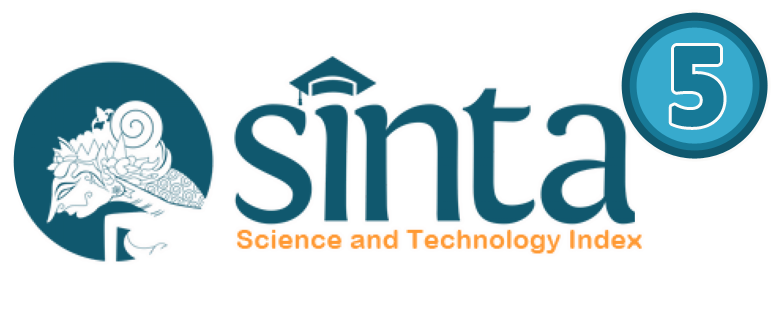BETWEEN ENGLISH, INDONESIAN, AND ARABIC LANGUAGE: INVESTIGATING CODE-SWITCHING IN ENGLISH ONLINE WRITING
Abstract
This study investigates code-switching practices among undergraduate students in online English writing at Sharia Tourism department in Cirebone, Indonesia. The research explores how these students navigate code-switching between English, Arabic, and their local languages. Furthermore, this research analyzes the factors which contribute code-switching in English writing online communication among young people. The data for this research are from questionnaires and analyzed quantitatively. The result show that the use of Arabic dominates the language choice for code – switching among undergraduate students in Cirebon, Indonesia. The most factor is caused by the effort to show their identity and maintain social relationship. This research contributes for educators and policymakers in developing effective teaching methods and fostering inclusive online learning environments.
Keywords
Full Text:
PDFReferences
Auerbach, Carl F. and Louise B. Silverstein. (2003). Qualitative Data: An Introduction to Coding and Analysis. New York: New York University Press.
Al-Qaysi, N. (2019). Students and educators‟ attitudes towards code-switching: A longitudinal study. International Journal of Information Technology and Language Studies, 3(2), 61-72.
Astuti, C. W. (2020). Language Awareness: Language Use and Reasons for CodeSwitching. LLT Journal: A Journal on Language and Language Teaching. DOI: https://doi.org/10.24071/llt.v23i1.2477
Bucholtz, M., & Hall, K. (2003). Sociolinguistic Nostalgia and the Authentication of Identity. Journal of Sociolinguistics, 7, 398-416.
https://doi.org/10.1111/1467-9481.00232
Faqih, M. S. (2022). Code Mixing Found in the Official Twitter of BKN (Indonesia
National Civil Service Agency). JEELL (Journal of English Education, Linguistics and Literature), 9(1). DOI: https://doi.org/10.32682/jeell.v9i1.1915
Fauzi, M. P. (2015). An analysis on code switching in "sharing HH android" group
in whatsapp application (Undergraduate), Syekh Nurjati State Institute for Islamic
Studies, Cirebon, Indonesia. Retrieved from http://repository.syekhnurjati.ac.id/
Firth, A., & Wagner, J. (1997). On Discourse, Communication, and (Some) Fundamental Concepts in SLA Research. Modern Language Journal, 81, 286-300.
Fishman, D. B. (1999). The Case for Pragmatic Psychology. New York: University Press.
Fishman. (1972). The Sociology of Language. Rawly Massachusett: Newbury House.
Fitriani, A., & Ramadhani, D. N. (2022). Code Mixing as a Communication Style Among South Jakarta Teenagers in Social Media. Palakka: Media and Islamic
Communication, 3(1). DOI: https://doi.org/10.30863/palakka.v3i1.2458
Hamers, J. F., & Blanc, M. H. A. (2000). Bilingualism and Bilingualism. Cambridge: Cambridge University Press. DOI: https://doi.org/10.1017/CBO9780511605796
Holmes, J. (2013). An introduction to sociolinguistics (4th ed.). New York, USA:
Routledge
Holmes, J. (2000). An Introduction to Sociolinguistics (2nd ed.). Wellington, UK: Longman.
Hong, L. F. (2007). The Phenomenon of Language Mosaic of Chinese Malaysians—The Expression of Language Fusion. Southeast Asian Studies, 4.
Halim, N. S., & Maros, M. (2014). The Functions of Code-switching in Facebook Interactions. Procedia - Social and Behavioral Sciences, 118, 126–133. DOI: https://doi.org/10.1016/j.sbspro.2014. 02.017
Masrahi, N. (2016). Causes of code- switching by low level EFL learners at Jazan University, Saudi Arabia: A teachers’ perspective. Journal of Language, Linguistics and Literature, 2(4). DOI: http://www.aiscience.org/journal/j3l
Momenian, M. and Samar, R. (2011). Functions of code-switching among Iranian advanced and elementary teachers and students. Educational Research and Reviews, 6(13).
Mujiono, M., Poedjosoedarmo, S., Subroto, E., & Wiratno, T. (2013). Code Switching in English as Foreign Language Instruction Practiced by the English Lecturers at Universities. International Journal of Linguistics, 5(2). DOI: https://doi.org/10.5296/ijl.v5i2.3561
Muhartoyo, & Sharone, V. (2023). Code Switching and Code Mixing Practised by K-POP Idols Diaspora. Lingua Cultura, 17(2), 227–231. DOI: https://doi.org/10.21512/lc.v17i2.10399
Syafrizal, & Sari, A. R. (2017). Code Mixing in Students’ Twitter Status at Sultan Ageng Tirtayasa University in Banten, Indonesia. European Journal of Foreign Language Teaching, 2(1). DOI: https://doi.org/10.5281/zenodo.345622
Sutrisno, B., & Ariesta, Y. (2019). Beyond the Use of Code Mixing by Social Media
Influencers in Instagram. Advances in Language and Literary Studies, 10(6). DOI: https://doi.org/10.7575/aiac.alls.v.10n.6p.143
Wardhaugh, R. (2006). An introduction to linguistics (5th ed.). Oxford, UK: Blackwell Publishing.
Windyawati, & Aurima, Y. O. (2018). An Analysis of Indonesia English Code Mixing in Facebook Status Users. PROJECT (Professional Journal of English Education), 1(5). DOI: https://doi.org/10.22460/project.v1i5.p539-544
Yanuar, Ivo Dinasta. (2022). “I Enjoy Writing in English”: Effect of Using Politeness in Written Direct Feed. The Journal of English Language Teaching in Foreign Language Context, 7(1). DOI: 10.24235/eltecho.v7i1.10461
Yao, M. (2011). On attitudes to teachers‟ code-switching in EFL classes. World Journal of English Language, 1(1), 19-28.
DOI: https://doi.org/10.36269/sigeh.v4i2.2618
Refbacks
- There are currently no refbacks.

This work is licensed under a Creative Commons Attribution-ShareAlike 4.0 International License.
ISSN ONLINE: 2775-8834




1.png)










